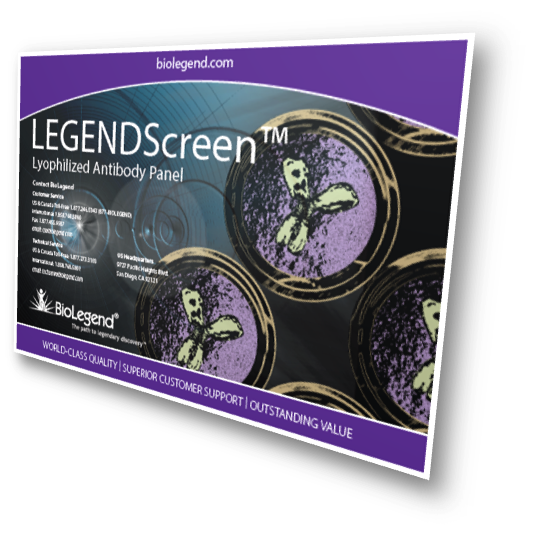BioLegend's LEGENDScreen™ products are lyophilized, fluorophore-conjugated antibodies provided in 96-well plates for the purpose of screening cell surface molecules on your cells of interest.
Why choose LEGENDScreen™?
- Large selection of specificities per screen - Human PE Kit has 354 cell surface marker antibodies plus 10 isotype controls. Mouse PE Kit has 253 cell surface marker antibodies plus 11 isotype controls.
- Fast and easy to follow protocol.
- Directly conjugated antibodies at pre-titrated optimal concentrations provide reliable results.
- Full kit with staining buffer, fixation buffer, and plate sealers.
- Explore the Antibody Staining Data Set, an immune monitoring project that was generated using our LEGENDScreen™ Human PE Kit, and read the paper by Amir et al.
 Login / Register
Login / Register 







Follow Us